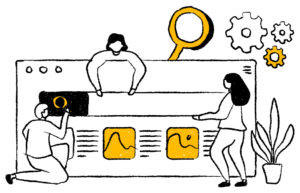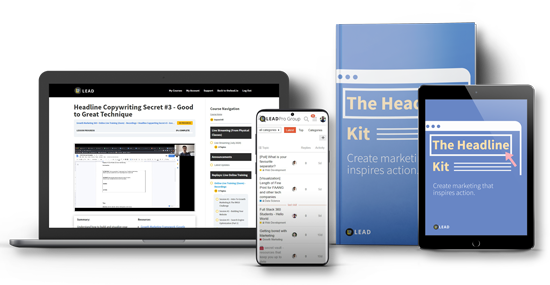SEO is the biggest buzzword of the last few years.
Yet there is still so much confusion surrounding it, even within content creators.
This leads us to our next question.
What is SEO?
SEO stands for search engine optimization.
What that means is that by using SEO techniques you’ll be able to make your search engines actually show your potential customers your quality content.
SEO, in turn, increases your search engine rankings
The question still stands:
How do I make my content SEO-friendly?
To answer your question we have made a list of ways you can make your pieces of content more SEO-friendly.
We will be covering both image and content optimization.
Image optimization

Optimize your images for SEO, whether they’re within a blog article or on a product landing page, using this checklist based on Sumo’s Image SEO Guide.
1. The image has a descriptive and unique alt attribute.
2. The image URL is optimized with a descriptive category and product name.
3. The image is relevant to the content.
4. The image has a descriptive and unique file name.
5. The image is in GIF, JPEG, or PNG format.
6. The image’s file name, URL, and alt attribute are not stuffed with target keywords.
7. The image has a caption with relevant and valuable information.
8. The image is added to the XML sitemap.
9. The page the image is on has an optimized meta title and meta description that relates to the image alt text and filename.
10. The image doesn’t contain text that is important for Google to read, e.g. the headline of the page in the image.
11. The image helps readers to catch important concepts of the content and adds to the overall experience.
12. The image is not a generic stock photo but is unique.
This makes your piece of content more interesting and unique.
13. The image contains structured data if it’s about a recipe, video, or product.
14. The image is placed close to the part of the content it relates to.
15. The image is responsive.
16. The image has clearly defined dimensions.
17. The image is compressed to improve site speed.
Image optimization is important, especially if your company practices an inbound strategy approach, as your image ‘alt’ is discoverable by the search engine which presents an opportunity for organic traffic.
Search engines include images for search, which means your website could be discovered via an image you published and give your website a boost in search.
If images on your site are optimized, this would mean in the long-term, relevant keywords in your images will help to increase your organic search traffic.
By improving site speed you increase user experience and lower the average period of time someone waits for your website to load.
By applying these straightforward and easy to apply tips, your images should be SEO-friendly within no time.
You will see the results in due time as well, don’t worry.
Remember content optimization and content marketing work hand in hand.
This means that in a similar fashion to content marketing, the results of SEO efforts are gradual but effective.
Next up:
Content optimization

1. Write content you want to write.
The first step so to create quality types of content you genuinely want to write and care about.
If you write blog content or individual blog posts purely to suit your target audience, you won’t be able to create genuine content.
2. Write content your readers want to read.
Use SEO tools such as answerthepublic.com to find questions your ideal customers are asking via google search based on the topic you have chosen for yourself.
This ensures that you are answering questions they need answered and that your blog post ideas bring value to your readers.
By doing this you can increase the effectiveness of your content strategy.
This helps you make informative content and relevant content.
3. Use keywords in your title.
Within your content, it is imperative that you chose a focus keyword.
These can be long-tail keywords phrases that you plan to base your work off or even primary keywords you think work best for your piece.
These will increase your click-through rates exceptionally.
For example, for this post, my keyword is SEO content optimization.
I used Frase as my keyword research tools.
4. Use websites to increase your topic score.
There are many keyword tools available to help you calculate your topic score.
We at LEAD use Frase.
On Frase you can find keyword ideas to increase the keyword density of your type of content.
Frase is an AI application that reviews your work in comparison to your competitor’s in order to tell you which keywords to add in to optimize your content further and therefore get a higher topic score than your competitors.
5. Use keywords in your content.

Fit SEO keywords organically into your content.
Make sure they don’t look awkward or come across as you just dumped it in to be more SEO friendly.
6. Use keywords in your headers.
When curating headers its so important to use effective keywords in it, but avoid keyword stuffing.
It helps your audience find relevant posts and content pieces based off their search query.
This makes your post more search engine friendly and increases your organic searches and search rankings.
7. Make sure your headers are effective.
Making sure your headers actually pack a punch is a key ingredient to a good post.
It’s a complex art, more complex than we thought.
LEAD created a headline kit to assist you through this.

It includes different types of headers, how to use them, and how to write them.
8. Structure your posts.
By structuring your posts you lessen the chances of your work getting lost in the mass of text.
In order to do this, you should make sure your white space is being used effectively to ensure readability during the average time your reader may spend on your page.
Using bulleted lists always helps.
When you have too much content on your page, readers can get easily overwhelmed which increases your bounce rate.
Using proper tag hierarchy when tagging headlines (H1 for titles, H2 for subtitles) is important to maintain a well-structured article.
9. Promote natural link building.
By adding internal links to your other relevant content pieces within your original post, you can ensure it will be linked back to your website if your article is picked up by another site.
This helps your website stay relevant no matter where on the internet ends up.
With these actionable tips, we are confident that your SEO strategy will be improved and that your SEO rankings will be higher than before.
Find the Headline Kit here for ways to up your header game.

Send us an email at chelsea.lead.io for any questions, we’re here to help you grow.


0 Comments
Trackbacks/Pingbacks